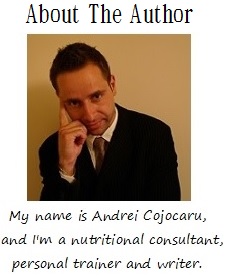The Fat Burning Hormones
The essential fat burning hormones that you should know about are insulin and catecholamines (adrenaline and noradrenaline).
These are the workhorses of the fat cell metabolism that determines how fat is stored, or mobilized and burned.
Of course, there are other hormones that influence this process, but you don't have that much control over them, so for now they can be ignored.
It's important to note that body fat is mobilized, and therefore burned, via an enzyme called hormone sensitive lipase (HSL), which is mainly regulated by insulin and catecholamines.
However, the aforementioned workhorses pull in opposite directions, so knowing how to deal with them will shape your weight loss journey.
I know, it's very poetic to compare the fat burning hormones with horses, but I couldn't find a better analogy.
Insulin is the main inhibitor of HSL, and even when you eat small amounts of carbohydrate or protein, HSL level is close to nothing.
However, it seems that triglycerides also impact negatively this enzyme, so whatever you eat, the result will be pretty much the same.
As a related note, some mainstream nutritionists argue that without insulin fat wouldn't be stored, and for this reason advise dieters to eat certain combinations of macronutrients.
By manipulating insulin, they believe that weight gain can be controlled, which is ridiculous because the only variable that finally determines if you gain or lose weight is your overall calorie intake.
I don't think you expect that eating peanut butter all day will transform you in a fat burning furnace.
Conversely, HSL is activated by catecholamines (which are known as the fight or flight hormones).
Adrenaline is secreted by the adrenal cortex, and has to travel through the blood stream to reach the tissues where it exerts its effects.
On the other hand, noradrenaline is released directly from the nerve terminals, and it has only local effects.
As a consequence, how you exercise is very important because low intensity activities have a slight effect on noradrenaline but almost no effect on adrenaline.
For this reason, doing only steady state traditional cardio won't help you to lose fat uniformly.
As you raise the intensity, the perceived stressor is greater, and consequently both adrenaline and noradrenaline gradually increase.
Therefore, high intensity exercise is best suited for stimulating these fat burning hormones because your body has to mobilize immediately its resources to face the hypothetical crisis.
When this happens, insulin levels plummet because your body wants to cease any energy storage, and HSL is activated.
It should be mentioned that low intensity activity doesn't necessarily block completely insulin. This may explain why some people who are dieting, and also doing some lame exercise on a treadmill often have difficulties in burning fat.
Normally, as alluded in the analogy with the horses that pull in different directions, when insulin is high, catecholamines are low and vice versa.
However, sipping a carbohydrate drink during your cardio session will increase insulin, and this will block fat mobilization regardless of catecholamine levels.
It's interesting to note that high intensity exercise seems to override the negative effect of insulin, and fat mobilization is not entirely perturbed.
This makes sense because your body perceives high intensity exercise as a potential emergency, and will readily mobilize its resources, no matter what.
As a conclusion, controlling the fat burning hormones will definitely give you better results in terms of weight loss and body composition. Therefore, how you diet and exercise is very important.
But remember... At the end, assuming an adequate protein consumption, it all boils down to total calorie intake and high intensity training.
Return from Fat Burning Hormones to Home





